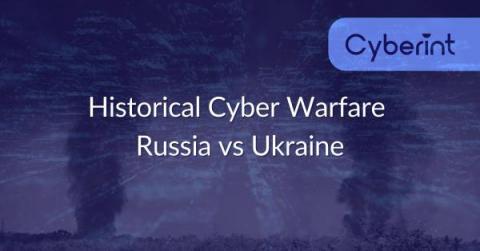Security | Threat Detection | Cyberattacks | DevSecOps | Compliance
Security
Log4j: Separating the exploits from the noise
How Netskope SSE Prevents Insider Threat Kill Chain
Historical Cyber Warfare - Russia vs Ukraine
Past as a Prologue: What Users can Expect with 2022 Cyber Threats
The cyber risk landscape changes quickly. In the last few years we’ve seen a rise in the number of ransomware attacks, and the end of 2021 was marked by the Log4J vulnerability. As data stacks get bigger and more difficult to defend, you may be wondering what threats are on the horizon in 2022. Based on what we’ve seen so far, the coming year’s risks are likely to be fairly familiar.
February Product Rollup: New Reports, Preview Types, and More
Egnyte is excited to share a number of improvements that were made to the platform this month, including added secure sharing capabilities, an expansion of supported preview file types, and more governance features for administrators.
Acting on CISA's advice for detecting Russian cyberattacks
Given that active cyber warfare has broken out alongside Russia’s active invasion of Ukraine - from Russian wiper malware to Anonymous hacking Russian state TV - CISA’s recent “Shields Up” memo is a timely insight into some of the TTPs defenders of critical infrastructure should be keeping an eye out for. Let’s break down the four key areas outlined in the memo and examine ways they can be detected with network data.
Cornwall Council Warns of Covid Scam Text Messages
Cornwall Council is warning residents about a new scam that is making the rounds on text messages. Fraudsters are sending scam messages that appear to be from the Cornwall Council, telling people that they need to isolate themselves due to being in contact with those with COVID19. They are being asked to click on a link for more information and to book a test. The text is being sent from mobile phone numbers, so it’s important to be wary of any links you receive from unknown senders.
New in Security Labs: Kotlin & Swift Mobile Courses
This week we’ve added new Kotlin & Swift Courses to the Security Labs catalog! The update includes 4-5 Kotlin (Android) labs and 4 Swift (iOS) labs that cover common mobile security topics such as secret storage, authorization, and custom URL handling.
Elastic protects against data wiper malware targeting Ukraine: HERMETICWIPER
Recently, we have seen several malware campaigns attacking Ukrainian organizations — Operation Bleeding Bear is a recent one of note. Elastic Security researchers recently verified a data wiper malware campaign that is targeting Ukrainian systems. As this malware campaign is new, with more information being uncovered hourly, it is being referred to as HERMETICWIPER.











